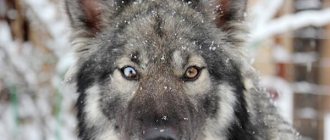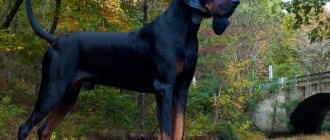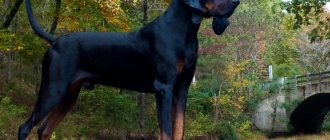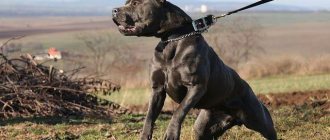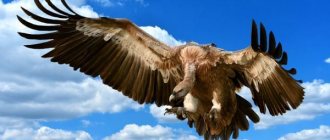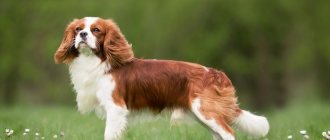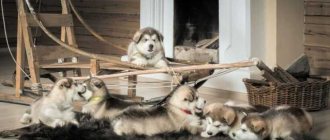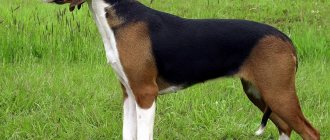More and more dog lovers around the world, when getting a pet, choose the Siberian Husky and Alaskan Malamute breeds. These are large and beautiful dogs, with good health and good character. Representatives of these breeds are not very different in appearance, they have similar maintenance requirements, so they are often confused. However, these are different breeds and are not related to each other. What are malamute and husky, let’s look at the differences between the breeds in more detail.
History of the Alaskan Malamute breed
The Malamute is rightfully considered the most ancient breed that appeared not only in North America, but throughout the entire planet.
There is a theory that it was the ancestors of modern Malamutes who became the first companions of humans, supported by the results of archaeological research. In 2004, scientists published research results
, according to which it was possible to establish that representatives of this breed are practically not subject to genetic changes, so modern dogs look the same as their distant ancestors who lived thousands of years ago.
Additionally, information was provided that Malamutes originated from domesticated wolves
that entered America through the Bering Strait from Asia along with nomadic tribes. A study of the DNA of the Malamute also revealed its relationship with the Klee Kai, the Siberian Husky, from which they differ in a more powerful physique and large size.
Being constant companions of humans, these representatives of the breed were forced to adapt to the harsh climate of Alaska and the meager diet in order to survive. Weak animals had no chance of procreation, so modern representatives of Malamutes have good immunity.
Selection work to develop the breed was based on natural selection, which provided for a chance of survival only for healthy and strong individuals. The Eskimo tribes, in which the Malamutes appeared, led a nomadic lifestyle, regularly moving across the icy desert in search of food. People needed dogs that could protect them while stationary, become a hunting partner, and withstand long journeys. Initially, these animals were not used as sleds, but with each new generation they became stronger and more resilient, so the Eskimos adapted them to pull sleds.
The world learned about Alaska's large sled dogs during the Gold Rush. Since 1896 to the northern regions
crowds of seekers of happiness and easy money rushed in, who needed fast and easy-to-drive transport.
Mammuts turned out to be the only suitable option, because they were capable of:
- Carry heavy loads.
- Move in the right direction in any weather.
- Make do with the simplest food without compromising performance.
Local residents highly valued their dogs, so they were not going to give them away for next to nothing to visitors. For each representative of the breed in those days you had to pay up to $500. Despite the high cost, the demand for Malamutes only increased.
Cunning Europeans tried to save money on sled dogs by trying to cross purebred representatives of the breed with St. Bernards or Newfoundlands. But the experiment was not successful: the mestizos had a quarrelsome character, were difficult to train and did not know how to work in a team. It turned out to be impossible to use these animals as sleds, but they found use as participants in sled races.
By 1908, the competition had become so popular
, that the amount of remuneration forced breeders to come from the farthest corners of Alaska. The thirst for profit and fame provoked many to experiment to improve the characteristics of Malamutes. Most breeders tried to breed faster and more communicative individuals, capable of quickly adapting to changes in environment and climate.
By 1920, breeding work had led to a reduction in the number of purebred animals to a critical minimum
. The greatest damage was caused by crossing Malamutes with small dog breeds. Only thanks to enthusiasts was it possible to restore the population. The work was carried out for 20 years, but during the Second World War these dogs again found themselves on the brink of extinction.
After the active participation in combat operations of purebred animals, only 30 remained alive. Breeders used all possible means to preserve the breed, but this was not enough for the descendants of the animals to fully meet all the criteria of the standards. Small differences in modern puppies from their ancestors required amendments to the standard. Thanks to the painstaking work of breeders in the 21st century, Malamutes not only continue to live and help residents of the North cope with the transportation of heavy loads, but have also become one of the most popular breeds.
The high interest in sled dogs, along with the appreciation of the guarding and communicative qualities of these animals, allowed Malamutes to gain popularity outside of Alaska. In the 21st century, they received the status of a symbol of the largest state in America.
.
Breed Features
Large animals that look like a wolf always try to dominate others.
They are good-natured towards people, condescending, so only those breeders who are guided by rich experience and the ability to understand the psychology of a pet can force him to follow orders. The ability of Alaskan Malamutes to independently assess the situation and make decisions is highly valued in the harsh northern conditions, when a person’s life can depend on the actions of the animal. Willfulness on the part of such large pets, which also have a huge amount of energy, often becomes a serious test for the owner in everyday life. Many Malamute owners who decided to buy a puppy just because of its appearance were unable to cope with an adult animal. Raising and training representatives of the breed requires a person to have enormous endurance, appropriate temperament and a precise understanding of the ultimate goal. Purchasing such a dog is possible only after a complete study of all the character traits, rules of keeping and assessment of one’s own capabilities.
In Russia, they learned about “sled wolves” from Alaska back during the conquest of Siberia, but at the beginning of the 21st century in our country these dogs were represented in single copies and belonged to exotic breeds. Only in the last decade have they begun to actively conquer Russian hearts.
Similarities
Representatives of the breeds under consideration are characterized by a number of similar features:
- Both breeds belong to the category of northern sled dogs. Their main purpose is to transport people and goods in low temperatures.
- The animals have thick fur, so they are not afraid of abnormal cold.
- The color of the dogs is almost completely identical.
- The dogs are characterized by almost the same height. The difference is literally two centimeters.
Alaskan Malamute breed standard (appearance)
Despite the obvious similarity in color to the Husky, the Alaskan Malamute differs favorably from them with longer hair and larger size.
The animals are hardy, capable of pulling heavy harnesses throughout the day. Dogs are capricious and constantly doubt the need to follow commands. Until 1960, there were 2 breed lines
: Kotzebue and M'Luth. The first was characterized by maintaining similarities with wolves in habits and color. Representatives of the M'Lut line could have black and white, white and blue colors, were less aggressive and easier to train. Due to the need to restore the population, breeders had to abandon the idea of preserving different lines in favor of a single standard for the breed. Modern Malamutes can show signs of both lines.
general description
The dog is a representative of the Spitz group, has a muscular body covered with dense long hair.
Adults are large: a male grows up to 59 cm
at the withers and gains a weight of
64 kg
, bitches are somewhat smaller -
38 cm
with a body weight
of 34 kg
. The puppies are very fluffy, medium-sized, outwardly similar to their parents only in color.
Representatives of the breed are energetic
,
temperamental
,
strong and intelligent
, which distinguishes them from other dogs. Even experienced breeders admit that Malamutes have become a real discovery for them. These animals are suitable for life in a city apartment only if the pack is dominated by a person who is able to keep the destructive energy of the pet under control.
Willfulness and stubbornness on the part of the dog are clearly manifested when its upbringing is insufficient and there is a lack of training. It is possible to cope with behavioral shortcomings if you have patience and sincere love for your Malamute. The pet responds to care with sincere devotion, but obeys the person only if it trusts and respects. Once you lose the trust of this dog, it is no longer possible to restore the relationship. He will be kind, caring, but independent in making decisions.
Head
Quite wide, but proportional to the body. The skull is rounded at the ears, tapering towards the eyes. The transition to the cheekbones is rounded. The muzzle is large, the stop is faintly noticeable. The muzzle tapers slightly towards the nose.
Teeth
The standard provides for a scissor bite only. Malamute teeth are white, large, tightly set in wide jaws. Cheekbones must be flat. Detection of underbite or overbite is grounds for culling an individual.
Eyes
Only almond-shaped, set obliquely. Eye size is medium. The standard provides only a brown tint to the iris. A black eyelid is required. Individuals with blue eyes are subject to culling.
Ears
Medium size and triangular in shape, rounded at the tips. Visually they do not look large enough in comparison with the size of the head. Located at the back and edge of the skull, they are typically in line with the upper corners of the eyes. A high seating position is considered a disqualifying feature. In a relaxed state, a dog’s ears are raised up and directed forward; if they are turned to the sides, the animal is alert to something. Dogs may roll their ears back when working hard.
Nose and lips
The lips of Alaskan Malamutes are dense and thin, black in color. The nose is large with wide nostrils. The color of the lobe in red pets is brown, in other cases it is black. It is typical that during periods of severe cold, pigmentation of the nose may be less pronounced.
Neck
Proportional to the body, not long and moderately curved. These animals have a fairly strong and wide neck.
Frame
Visually it looks compact, but is not short. Massiveness is ensured by a wide and strong bone structure.
Tail
It is a continuation of the line of the middle position, twisted into a ring. In purebred individuals, the tail is raised high and does not touch the back. The tail, like the whole body, is covered with long hair.
Forelegs
The forelimbs are straight, massive, parallel, but slightly inclined at the shoulder blades. The muscles are well developed. The strong pasterns are somewhat short and slightly sloping. The paws are large with developed pads, deep and protected by fur, which provides them with freedom of movement in deep snow. Plates are strong with strong claws.
Hind limbs
The hind limbs are muscular and massive, located in line with the forelimbs. The production is average. The knee joints are not clearly defined, moderately angular. The paws are wide with well-developed large toes, the space between which is occupied by hair. The pads are durable.
Malamutes use precise, even movements to move around, ensuring perfect balance and precision. The movement begins with a strong push from the hind limbs, the impulse is transmitted along the developed lower back to the forelimbs, which begin a smooth step. The moment of each push at the beginning of the movement is clearly visible when viewed from the side.
Moving at a moderate speed requires the dog to place his paws along the same line, but when accelerating, it is acceptable to place his paws closer to the center line. The pet must be weaned off the habit of constantly moving in this way, because this negatively affects their endurance and speed of movement.
Wool
To protect against the cold, nature provides Alaskan Malamutes with a double coat, consisting of hard guard hairs and dense soft down. The fur is longer on the hips, neck and shoulders. Grooming of these animals is contraindicated.
Color
Most often, representatives of the breed have a wolf color, less often the coat has a gray, black or white tint. Differences in the color of the down and guard hairs are allowed in the pant area. The combination of colors on other parts of the body is classified as a defect.
The lower part of the body and the mask are necessarily painted white; it can dominate the coloring of the limbs. Individuals with white collars or such a mark on the forehead are also highly valued due to their visual attractiveness.
The standard provides for a uniform distribution of color and excludes the presence of spots that break it or distort the symmetry of the pattern.
Varieties
At the moment, there are two lines of Alaskan Malamutes, which, albeit insignificantly, still differ from each other. First of all, in size. But there are other differences, which the table will tell you about.
Table - Characteristic differences between Malamutes of the M'Lut and Kotzebue lines
| Characteristics | M'Luth | Kotzebue |
| Height at withers, cm | Up to 63 | Up to 60 |
| Weight, kg | 38 | 36 |
| Aggressiveness | + | — |
| Color | - White; — black and white; - brown-white; - sable; - red and white | Wolf |
Breeders are still arguing about who is better - representatives of the M'Luth or Kotzebue line. But as long as none of the varieties has lost its original functions and working qualities, this dispute will be meaningless and endless.
Possible defects
The main task of Alaskan Malamutes is to transport heavy loads, which requires ideal paw condition.
Any deviations in the shape of the limbs that affect the manner of movement or stance are usually regarded as a developmental pathology. The most common defects are:
- Straight shoulders.
- Weak pasterns.
- Widely spaced hindquarters.
- Insufficiently developed muscles.
- Excessive weight.
- Weak bones.
- Body disproportion.
A movement pattern that differs from that prescribed in the standard is considered insufficiently effective and is therefore also considered a breed defect.
The definition of an identified deviation from the standard as a defect depends on how pronounced it is and how capable it is of affecting the health of the individual as it grows. Disqualifying faults
The basis for culling an individual is considered to be the presence of physical characteristics that do not meet the standard. A male dog can also be disqualified if it is discovered that he has underdeveloped testes or undescended testicles into the scrotum. Dogs that show excessive aggression towards other animals, humans, or experience paralyzing fear when placed in an unfamiliar situation are subject to culling.
TOP nicknames
The names of the dogs from the novel “White Fang” by Jack London immediately come to mind: Bill, Jock, Smoke, Chun. But it is not necessary to call the dog a foreign name: for males and females, Slavic ones that are familiar to our ears are also suitable. And any complex name in the family circle can acquire a diminutive variation. If you are at a loss as to what to name your pet, use the table. It offers ten of the most popular nicknames of this breed.
Table - Suitable nicknames for “Alaskans”
| Slavic for "boy" | Foreign for "boy" | Slavic for "girl" | Foreign for "girls" |
| - Barkhan; — Vulture; - Altai; - Hussar; — Vulcan | — Clark; — Bruce; — Dewey — Dream; — Truman | - Snowstorm; - Blizzard; — Weasel; — Varta; - Vlada | — Maya; — Shadow; — Gloria; — Assol; —Barbara |
Character of the breed representative - Alaskan Malamute
The Alaskan Malamute is energetic enough
to constantly find different ways to attract the attention of the owner, showing the character of the Alaskan Malamute in its readiness to work or too destructive movements around the apartment. They are not able to spend a lot of time inactive, therefore, if there is a lack of physical activity, they will begin to arrange fights with other pets and furniture.
After short walks, you shouldn’t count on calmly watching TV in the company of a peacefully sniffling dog. Representatives of the breed are only provoked by such exercise and the return to the apartment offends them; they begin to make noise, run, jump, trying to convince the owner to return to the fresh air. Letting a dog out into the courtyard of a country house in such a mood without supervision is dangerous due to the appearance of a huge pit on the site.
In order to cope with the pet’s energy, the owner needs to constantly work with him from the first days, ensuring maximum physical activity. Long runs are the most beneficial for him.
.
Regular exercises help representatives of the breed to direct their strength in a peaceful direction, making it easier to assimilate the training program and remember commands. Puppies are overly active
, adult animals
over 3 years of age are already calmer
, begin to expend energy economically, and act judiciously, but only if daily intensive sports training is maintained.
The representatives' protective instincts are poorly developed. These dogs are completely deprived of the ability to bark, so they cannot attract the attention of the owner. The absence of clearly expressed aggression towards strangers also does not allow raising an Alaskan Malamute as a reliable watchdog. The dog can only frighten unexpected guests with its size and external resemblance to a wolf, which intensifies when it begins to howl. Noticing that a stranger or other animal is threatening the safety of its owner, the malamute attacks without much warning.
In the process of education, it is necessary to immediately prove that the main thing in the house is the person. This is the only way the dog can show his good nature and high communication skills. Otherwise, the pet will turn into a tyrant, forcing the entire family to obey his whims. An animal that dominates a home can become dangerous to humans and completely uncontrollable.
Dogs get along with children
, but you shouldn’t leave them alone with small family members. Any weakness can be regarded as a threat and provoke an appropriate reaction. When communicating with children, it is easier for representatives of the breed to achieve dominance, which is another reason to prevent their communication without control from the owner. The breeder is required not to scold the child in the presence of the dog; after this scene, she may come to his defense or begin to regularly ignore the need to obey him, considering him as an inferior member of the pack.
Good memory
, laid down at the genetic level, provides dogs with the ability to navigate in the conditions of an icy desert and a metropolis, helps to remember a large number of commands and behavioral scenarios in a wide variety of situations. During the training process, it is necessary to take into account the animal’s ability to remember for a long time not only praise, but also cruelty and insult. When convenient, they can take revenge.
Representatives of the breed cannot tolerate small confined spaces; they can live in an apartment, but with a lack of communication and entertainment, they begin to get bored with the monotony. Running at high speed helps them get rid of boredom; if this happens in an apartment, the result will be overturned furniture and broken dishes. Some pets prefer to fight routine by deliberately destroying the owner’s property: chewing shoes, tearing upholstery or tearing off wallpaper. Experienced breeders recommend placing such a dog in a spacious enclosure so that its entertainment does not lead to serious repairs or cruel punishment for the dog.
When properly raised, Alaskan Malamutes prefer to direct their energy towards developing their artistic abilities. They are especially good at copying the habits of the feline family, precisely repeating the manner of lying down, washing themselves, or preparing to jump after a long time of tracking a prey.
Training and education of the Alaskan Malamute
From birth, representatives of the breed show a fair amount of intelligence and high activity, which is expressed in the rapid development of leadership qualities.
A person is required to show firmness in the process of education, not to give concessions to the pet, even if he actively uses his acting abilities. All the breeder’s actions must be consistent and unambiguous, so that the Malamute never even has the desire to doubt the correctness of the commands given and the need to learn new tricks. Alaskan Malamute training begins immediately after purchasing a puppy. The pet needs to be taught to respond to its name, keep its place and fur clean, and follow simple commands. Classes should be alternated with dosed physical activity. The volume of sports exercises and the number of teams are gradually increased.
At the genetic level, dogs have a friendly attitude only towards humans, so you should not count on them independently establishing friendly relations with birds, rodents or other dogs living under the same roof. The owner is obliged to teach the pet the rules of behavior in the house.
The level of socialization of a Malamute in adulthood is proportional to the efforts made for this purpose by the breeder. A four-month-old puppy needs to be taken to training areas regularly to learn how to behave around other dogs. As they grow older, this measure will pay off in the presence of reliable friends for noisy games in a safe area.
Frequent walks on a leash with regular changes of route allow the animal to get used to a large number of people and sounds, strengthening their nervous system. Even if a pet lives in a country house, its training program should include getting to know different people, animals, and traveling in a car. An encounter with sharp, unfamiliar sounds in adult life can be a heavy blow to the nervous system of a representative of the breed.
Photo review
“Alaskans” are the standard northern beauties. Their gait is confident, their body is strong, and their muzzle almost always emits a characteristic canine smile. Photos of puppies and dogs of this breed make you fall in love with them at first sight. By the way, “males” (that’s what the Americans call Malamutes) are regular participants in animal-assisted therapy. According to this program, dogs visit sick people in hospitals and clinics to lift their spirits and improve their well-being.
Care and maintenance
The long, thick coat allows representatives of the breed to feel comfortable on the streets in any weather. In summer, the fur thins out significantly. The breeder is required to brush the coat regularly to prevent the formation of tangles. It is recommended to perform these procedures 1-2 times a week. During the molting period, the fur is combed daily.
Keeping a country house in an apartment or enclosure requires mandatory jogging and training classes to be included in the animal’s daily schedule. Representatives of the breed have a physical need for constant muscle training, therefore, in the absence of attention from the owner, they provide themselves with the necessary physical activity on their own: they run around the house, demolishing everything in their path. These dogs consider idleness and simple walks in the yard as an insufficiently effective pastime, so they constantly try to set a record for the depth of a dug hole in the shortest possible time.
When creating a menu for your pet, experienced breeders recommend giving preference to natural food. Unpretentiousness in food allows Alaskan Malamutes to get along well with porridges from various cereals cooked in meat broth. Additionally, meat offal is added to the dish. High quality dry food can be introduced into the diet during preparation for competitions or exhibitions. During this period, it is necessary to increase the amount of protein food in the animal’s menu.
Mating
According to experienced dog breeders, mating of Malamutes should occur when the male is 24 months old and the female is 20 months old. It is not recommended to breed dogs at a younger age, as this is a big burden for their fragile bodies. Knitting can be freestyle or manual. With freedom, the process occurs naturally. If the bitch is inexperienced, the dog owner helps them by first putting a muzzle on the bitch.
During pregnancy, physical stress on the bitch should be reduced. To give birth to puppies, you need to prepare a place for the dog and let her get used to it. At the moment when labor begins, you need to be close to the dog, distract it, and surround it with affection. Once the puppies arrive, it is best to leave the bitch alone. After the birth of the offspring, it is also better not to approach them at first. The mother should be allowed to feed and wash the puppies in peace. Then it will be possible to toilet the dog and examine the puppies.
Health and Diseases of the Alaskan Malamute
Representatives of the breed are resistant to various infectious diseases, which is associated with the peculiarities of life of their ancestors, but changing conditions have left their mark on modern dogs in the form of a tendency to neurological disorders.
Polyneuropathy is considered the biggest problem for the nervous system. If the dog's thick and long hair is not properly cared for, demodicosis or atopic dermatitis develops. The list of other pathologies that Malamutes are susceptible to includes:
- Diabetes.
- Low level of blood clotting.
- Adenocarcinoma of the anus.
- Dwarfism.
- Increased flatulence and bloating.
- Hip dysplasia with lack of motor activity.
Representatives of the breed often suffer from eye diseases; they may develop cataracts, retinal atrophy, increased sensitivity to daylight, and glaucoma.
In isolated cases, Alaskan Malamutes are diagnosed with hypothyroidism, but even malfunctions in the thyroid gland slightly reduce the life expectancy of these animals. Representatives of the breed live on average about 16 years.
How to choose an Alaskan Malamute puppy
You should only purchase an Alaskan Malamute from a registered kennel or from a reputable breeder.
The animal must have all the necessary official documents from the Russian Cynological Federation or the Union of Cynological Organizations. Purchasing a puppy from your own hands or from various clubs, even if it is not planned to participate in exhibitions with it, is dangerous by purchasing an individual with mental defects. An undocumented animal may have a number of congenital diseases and cannot be raised or trained, which will lead to big problems in adult life and may even cause euthanasia. Breeders recommend purchasing a puppy at the age of 1-4 months
. The younger the pet, the easier it is for him to become attached to a person, and for the owner to cope with the dog’s leadership qualities. Some breeders believe that being part of a pack for long periods of time contributes to the development of a desire for dominance. People for whom the pet's exterior is important try to buy a puppy at the age of 4 months, because it begins to appear only at this age.
Small Malamutes have thick, soft hair that matches the color of an adult animal. Healthy representatives of the breed have thick, straight legs and a belly. The eyes are necessarily dark, clear, with a lively gaze that easily focuses on the object that attracts attention. The tail of puppies is thick and fluffy.
When planning to take your dog to shows, when choosing a puppy, you should give preference to one that shows innovative thinking in solving problems, is daring and has the appropriate external characteristics. You can determine the presence of the necessary character traits by simply observing the dog you like. The animal's health is indicated by its appetite, shine and cleanliness of its coat.
Considering the high intelligence of Alaskan Malamutes and their leadership qualities, when choosing a puppy, it is customary to conduct a mental health test using a light collar and leash. Faced with an unexpected and unpleasant change of environment, the dog must adapt within a few minutes in order to independently follow the person. A little coaxing is required from the potential owner to allow the dog to be convinced of the good intentions of the new person. It is recommended to refuse to purchase an animal that begins to whine, fall, or resist movement when on a leash if you plan to participate in races or perform at exhibitions, because it will not grow into a leader.
How much does an Alaskan Malamute cost?
The cost of an Alaskan Malamute depends on the purpose of purchase. Play partners and just pets can be purchased without the appropriate documents for 10,000 - 15,000 rubles
.
But you can purchase a puppy for subsequent participation in exhibitions for 100,000 rubles
. Such a high price for the Alaskan Malamute is largely an insurance policy for breeders who understand that show winners will quickly turn into competitors.
When choosing a Malamute, you should take into account not only high health indicators and a good pedigree; the price is also influenced by the personal achievements of the parents. The highest price for puppies is declared by owners whose pets have won world-class exhibitions. A dog from parents who are winners of the Russian championship will cost a potential buyer less.
How to buy a puppy
It is better to buy puppies from reliable breeders with a good reputation. The price depends on several factors. Malamute puppies that do not have a noble pedigree will cost 10,000 or 12,000 rubles. A puppy from titled parents costs from 15,000 to 30,000 rubles. Children from champion parents are more expensive.
When purchasing a pet that looks more like a plush toy, you should carefully examine it and assess its condition. A healthy puppy is active and cheerful. Kennels where you can buy Malamute: Alveig, Mal Planet, From Konev-Bor.
